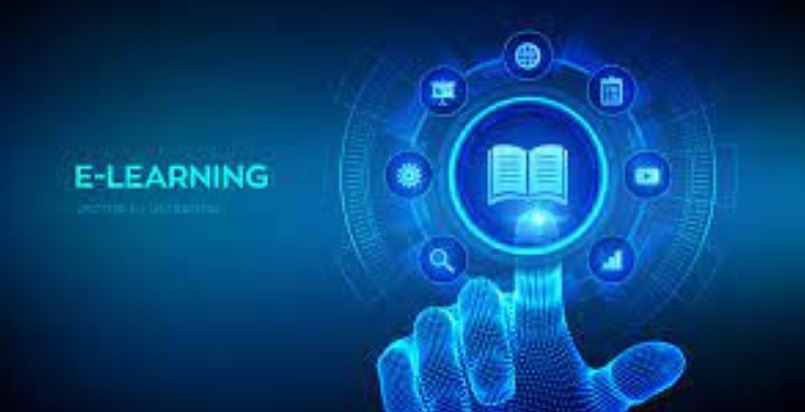Just How an LMS Learnership Can Transform Your Labor Force and Service
Just How an LMS Learnership Can Transform Your Labor Force and Service
Blog Article
Strategic Execution of LMS Learnership Programs for Lasting Employee Development
In the realm of workforce advancement, the critical application of Learning Management System (LMS) learnership programs stands as a linchpin for promoting sustainable worker growth within organizations. By diving right into the ins and outs of designing and implementing LMS learnership programs with a critical lens, organizations can unlock a variety of advantages that not only improve employee abilities but also add to the general sustainability and success of the company.
Benefits of LMS Learnership Programs
LMS learnership programs provide a multitude of advantages for both staff members and organizations looking for constant specialist growth. Additionally, these programs frequently offer a wide range of programs and resources, allowing employees to obtain new skills and knowledge appropriate to their functions or profession ambitions.
In addition, LMS learnership programs advertise a culture of continual knowing within companies. By urging staff members to upskill and remain updated on industry trends, companies can improve their overall competitiveness and advancement capabilities. This concentrate on understanding and growth likewise enhances worker morale and interaction, leading to greater retention rates and enhanced job contentment. On the whole, the benefits of LMS learnership programs extend past private development to incorporate the all natural improvement of both workers and the companies they offer.

Secret Approaches for Implementation
Building upon the foundational advantages highlighted previously, reliable implementation of learnership programs requires critical planning and implementation to maximize their influence on staff member development and organizational development. One key method for successful execution is straightening the learnership program with the company's overall objectives and goals. By guaranteeing that the program's content and structure remain in sync with the business's calculated instructions, workers are more probable to see the importance of their involvement and how it adds to the larger picture.
Leadership assistance not only offers the essential sources and financing however additionally sends out a message to employees concerning the program's relevance. In addition, developing a durable communication plan that details the program's structure, advantages, and assumptions assists in taking care of participant and stakeholder assumptions, fostering engagement, and maintaining transparency throughout the application process.
Measuring Program Efficiency
Efficient dimension of the learnership program's impact is essential for analyzing its overall efficiency in enhancing employee development and contributing to business development (lms learnership). Common KPIs for determining the effectiveness of learnership programs consist article of staff member interaction degrees, knowledge retention rates, abilities improvement, and efficiency enhancements.

Overcoming Implementation Challenges
To guarantee the effective implementation of learnership programs and maximize their influence on staff member growth, organizations should deal with and conquer numerous challenges that may develop during the implementation stage. One typical obstacle dealt with is resistance from staff members who may be hesitant to take part in new learning campaigns. This can be minimized via clear communication regarding the benefits of the program and addressing any kind of issues increased by personnel.
One more challenge is the lack of read review resources, both in regards to budget restrictions and time restrictions. Organizations can overcome this by focusing on the allowance of sources in the direction of the learnership program and looking for exterior funding or partnerships to support its execution.
Additionally, ensuring active involvement and interaction from both workers and management is vital for the success of the program. This can be attained with developing clear goals and expectations, supplying continuous assistance and responses, and identifying and compensating accomplishments. By proactively addressing these implementation obstacles, organizations can improve the effectiveness and sustainability of their learnership programs for employee development.
Guaranteeing Long-Term Sustainability
Safeguarding the longevity of worker growth efforts requires critical planning and continual adaptation to developing business needs and external elements. To make sure the long-term sustainability of LMS learnership programs, organizations must focus on a number of key facets. It is essential to frequently assess the efficiency of the program with efficiency metrics, individual responses, and positioning with organization objectives. This examination allows the recognition of locations for renovation and modification to Resources ensure the program continues to be relevant and impactful.
Integrating the learnership program right into the company's long-term strategic planning makes certain that it receives the necessary sources, buy-in from leadership, and placement with the organization's future instructions. By taking an aggressive and holistic technique to the sustainability of LMS learnership programs, companies can grow a skilled and dexterous workforce qualified of satisfying the challenges of tomorrow.
Final Thought
Finally, the critical execution of LMS learnership programs is necessary for sustainable employee growth. By concentrating on benefits, vital techniques, determining efficiency, overcoming challenges, and making certain long-lasting sustainability, companies can develop a structured strategy to sustain continuous learning and development. This method allows staff members to improve their abilities and knowledge, inevitably bring about improved performance and performance within the organization.
Report this page